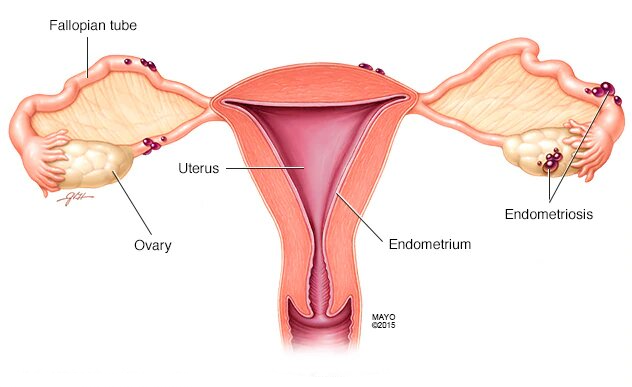Endometriosis Surgery
Endometriosis is a condition in which cells that resemble those found in the endometrium, the layer of tissue that normally covers the lining of the uterus, develops outside of it. Pelvic discomfort and infertility are the most common symptoms. Many of those impacted suffer from chronic pelvic pain, prompting them to seek medical attention.
For expert guidance and personalized Endometriosis Treatment in Mumbai, consider consulting Dr Anshumala Shukla-Kulkarni, who can provide comprehensive care. Endometriosis can be treated or managed in a variety of methods, depending on the patient’s specific medical situation. Endometriosis management or treatment options include medication, hormone therapy, surgical management, or alternative treatments.

Surgical treatment is frequently recommended to adequately treat endometriosis. The only way to confirm the diagnosis is to perform a laparoscopic examination with a biopsy of suspected endo lesions. Delaying therapy allows the disease to spread and the pain to worsen, so surgical removal (endometriosis excision) is strongly advised. Other methods, such as medication and hormone therapy, are typically recommended as complementary follow-up methods to prevent or delay disease recurrence and manage pain following surgery.
Surgical Treatment
The most critical first step in the diagnosis and treatment of endometriosis is surgery. Endometriosis is a small-volume disease that cannot be detected using a pelvic ultrasound, CT scan, or MRI. Endometriosis lesions may be too small for these imaging studies to detect. As a result, we propose that most patients with symptoms such as pain or infertility, regardless of reproductive age, undergo a laparoscopy to diagnose and remove the disease at the same time.
Conservative Surgery
The uterus, fallopian tubes, and ovaries are all preserved during conservative surgery, and only the endometriosis is removed. Conservative surgery for endometriosis excision relieves pain but does not cure the disease. Following conservative surgery with medicinal care, pain control can be continued.
Fulguration of Endometriosis
Burning of endometriosis lesions is less effective than excision, owing to insufficient disease removal. These surgical techniques merely remove the visible area of endometriosis lesions, typically leaving the root intact. Any endometriosis that is not removed will most certainly contribute to the disease’s progression, ongoing pain, and, eventually, the need for reoperation. Endometriosis implants should not be burned if the illness affects the colon, bladder, ureters, or pelvic walls and vessels, as this could result in serious harm to those tissues.
Excision of Endometriosis
Endometriosis excision is a minimally invasive surgical procedure used to eliminate endometriotic lesions. These lesions can form on the tissue of the pelvic cavity. A trained endometriosis specialist will carefully remove each endometrial lesion and its origin, reducing the likelihood of regrowth. Thorough removal of all visible endometriosis, particularly during a patient’s initial surgery for the condition, has been demonstrated to provide the most therapeutic benefit.
Ovarian Endometriomas Resection
Endometriomas should be surgically removed rather than simply drained, and the ovary should be preserved. If an ovarian endometrioma is not entirely eliminated, it has the potential to recur. In most cases, removing the ovary while removing the endometrioma is unnecessary.
Long-Term Surgical Procedures
Hysterectomy and presacral neurectomy are more effective, long-term surgical alternatives. When compared to more conservative management methods, these solutions provide longer-term alleviation.
Hysterectomy
Women who do not want to have children can have a hysterectomy with or without ovaries removed (bilateral salpingopherectomy). When conservative surgery has failed to relieve pain or other severe symptoms, a hysterectomy is the next best option.
A hysterectomy with the removal of cysts in ovaries is the most effective long-term pain control treatment for endometriosis. However, for many younger women who have finished childbearing but do not wish to enter menopause, a hysterectomy — which does not remove the ovaries — provides tremendous pain relief.
Medication
Following endometriosis diagnosis and surgical excision, medication suppression is frequently used to manage any lingering symptoms and reduce the likelihood of recurrence. It is vital to note that after complete excision of all disease, suppression of endometriosis with medical therapy is likely to be more successful and last for a longer period of time.
Take the first step towards managing endometriosis. Schedule a detailed consultation with Dr Anshumala Shukla-Kulkarni in Mumbai to learn about your Endometriosis Treatment options.
